Latency Large
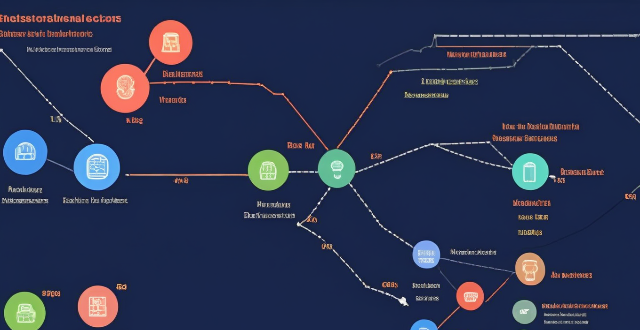
Why does my network latency fluctuate throughout the day ?
The article explores various reasons for fluctuations in network latency, including network congestion due to high traffic volume, large file transfers, and server load; physical distance and infrastructure issues related to geographical location, network hardware, and ISP differences; and local network conditions such as wireless interference, multiple devices sharing bandwidth, and malware or viruses affecting performance. It suggests ways to minimize latency fluctuations, like upgrading equipment, optimizing Wi-Fi setup, scheduling large downloads during off-peak hours, using wired connections, and scanning for malware.

What causes network latency ?
Network latency is a critical metric in networking, referring to the delay that data experiences when traveling between two points in a network. Understanding the causes of network latency is essential for optimizing productivity, collaboration, and user experience in today's digitally reliant world. The article delves into the various factors contributing to network latency and why it matters.

How does network congestion impact latency ?
The impact of network congestion on latency can be significant and can have a negative effect on the overall performance of the network. This can include increased transmission time, higher drop rates, reduced bandwidth availability, and impacts on application performance. It is important for network administrators to monitor and manage network traffic to minimize the impact of congestion on latency and ensure that applications continue to function properly.
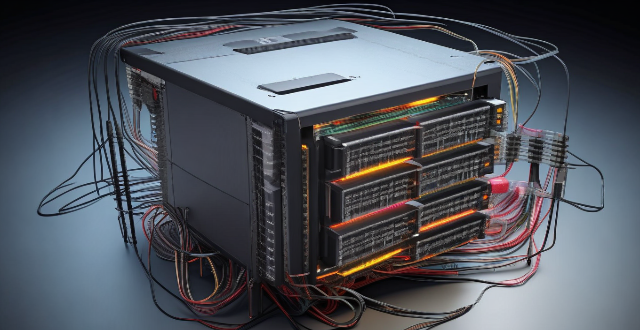
What is considered high network latency ?
High network latency is a delay in data transmission that can negatively affect the performance of applications and services. It is influenced by various factors such as distance, congestion, hardware performance, bandwidth limitations, QoS settings, and interference. The definition of high latency varies depending on the context, but it is generally considered to be any delay that significantly impacts the usability of applications or services. Identifying high network latency can be done using tools like ping tests or traceroute commands. Mitigating high network latency can involve upgrading hardware, increasing bandwidth, optimizing QoS settings, reducing physical distance, and minimizing interference.

How does network latency affect online gaming ?
Network latency, or "lag," is the delay in data transmission between a player's device and the gaming server. This delay can significantly impact online gaming by affecting gameplay smoothness, multiplayer interaction, game design, and user experience. High latency can cause input delay, movement jitter, synchronization issues, communication delays, and disconnections, making games frustrating and unplayable. In contrast, low latency offers responsive controls, smooth movement, fair play, effective communication, and an immersive experience. Game developers use optimization strategies like client-side prediction and server-side interpolation to minimize latency's effects. Managing network latency is crucial for maintaining a high-quality online gaming environment.

Are there any tools to help diagnose network latency issues ?
Network latency issues can be frustrating and detrimental to the performance of applications and services. Fortunately, there are several tools available that can help diagnose and troubleshoot these issues. Some popular tools used for network latency diagnosis include Ping, Traceroute, MTR (My Traceroute), Netstat, Tcpdump, and Wireshark. Each tool has its own strengths and weaknesses, so it's important to choose the right one based on your specific needs and circumstances. By using these tools effectively, you can identify and resolve latency problems quickly and efficiently.
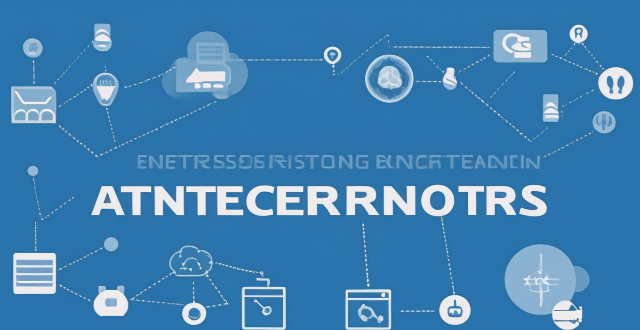
Can upgrading my internet package reduce network latency ?
The text discusses the topic of network latency and whether upgrading an internet package can reduce it. It outlines various factors affecting network latency, including ISP infrastructure, type of connection, location, and network devices. The text then explores different upgrade scenarios, such as moving from DSL to fiber optic or increasing bandwidth, and their potential impact on reducing latency. It concludes that while upgrading can potentially reduce latency, the specifics of each situation should be considered before deciding to upgrade.

Is there a way to measure network latency ?
Measuring network latency is crucial for understanding a network's performance. The ping test, traceroute, and online tools are methods to measure latency. Ping tests estimate the round-trip time, while traceroute identifies bottlenecks in the network path. Online tools provide visual representations of network performance.

What is network latency and how does it impact user experience ?
Network latency is the delay in data transmission over a network, influenced by factors such as distance, congestion, and hardware limitations. It negatively impacts user experience in online gaming, video conferencing, streaming services, web browsing, and online shopping, leading to frustration and reduced engagement. Reducing latency through optimized network infrastructure can enhance user satisfaction.

Is Wi-Fi 6 suitable for large office spaces or only for homes ?
Wi-Fi 6, or 802.11ax, is the latest wireless networking standard that promises faster speeds, better range, and improved network capacity. While it is primarily designed for home use, it can also be suitable for large office spaces under certain conditions. Advantages of Wi-Fi 6 in Large Office Spaces: Increased Speed and Efficiency: Wi-Fi 6 offers higher data rates and improved spectral efficiency, which means faster internet speeds and reduced latency. This is particularly beneficial in large office spaces where multiple devices are connected to the same network. Improved Network Capacity: With the increasing number of devices in a typical office environment, Wi-Fi 6 provides enhanced network capacity by allowing more devices to connect simultaneously without sacrificing performance. Better Range: Wi-Fi 6 has improved range compared to its predecessors, making it suitable for larger office spaces where coverage may be an issue. Target Wake Time (TWT): This feature reduces power consumption by allowing devices to sleep and wake up at scheduled times, which is especially useful in office environments where energy efficiency is crucial. Disadvantages of Wi-Fi 6 in Large Office Spaces: Cost: Upgrading to Wi-Fi 6 equipment can be expensive, both in terms of hardware and installation costs. For large office spaces, this investment may not always be feasible or cost-effective. Compatibility Issues: Not all devices support Wi-Fi 6 yet, so there may be compatibility issues when integrating older devices into the new network. Complexity: Managing a Wi-Fi 6 network in a large office space can be complex due to the sheer number of devices and users involved. Proper planning and management are essential to ensure optimal performance. Conclusion: While Wi-Fi 6 is primarily designed for home use, it can also be suitable for large office spaces under certain conditions. The advantages of increased speed, improved network capacity, and better range make it a viable option for businesses looking to upgrade their wireless infrastructure. However, the potential disadvantages such as cost, compatibility issues, and complexity should also be considered before making a decision.

How can I reduce network latency in my home ?
To reduce network latency in your home, check your internet speed, upgrade your router, use wired connections, optimize router settings, limit bandwidth hogs, place your router strategically, use a Wi-Fi extender or mesh network, and close unused applications and tabs.
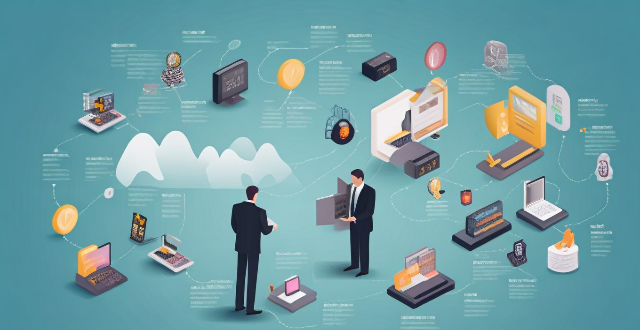
What impact has 5G technology had on the telecommunications industry ?
The advent of 5G technology has revolutionized the telecommunications industry, offering faster speeds, lower latency, and increased capacity. Key impacts include enhanced mobile broadband, ultra-reliable low-latency communications, and massive Internet of Things connectivity. These advancements have led to changes in network infrastructure, service innovation, economic growth, and social development. However, challenges such as coverage limitations, compatibility issues, spectrum allocation, and security concerns need to be addressed. The full potential of 5G is yet to be realized but holds immense promise for positive change across various sectors.

How fast is the 5G network compared to 4G ?
The fifth generation of wireless systems (5G) is significantly faster than the fourth generation (4G). The speeds achievable with 5G can vary depending on several factors, including network congestion, device capabilities, and the specific technology implementation. However, here are some general comparisons to give you an idea of the differences: - Download Speeds: Typical download speeds for 4G can range from 10 to 50 Mbps (Megabits per second), while with 5G, download speeds can start around 100 Mbps and can go up to multiple Gbps (Gigabits per second), with peak theoretical speeds reaching as high as 20 Gbps. - Latency: Latency in 4G networks typically falls between 30 to 50 milliseconds, while one of the major improvements with 5G is its reduced latency, which can be as low as 1 millisecond. - Bandwidth and Capacity: While 4G offers sufficient bandwidth for many current applications, it can struggle under heavy loads or during high-traffic events, while 5G is designed to handle much higher capacity and density of connections, making it better suited for crowded areas and large-scale deployments. With faster speeds and lower latency, streaming services can offer higher resolutions with less buffering, meaning smoother playback for 4K and even 8K video content. 5G's low latency makes it ideal for Augmented Reality (AR) and Virtual Reality (VR) experiences that require real-time interactions without delays. 5G can connect many more devices simultaneously than 4G, facilitating the growth of smart cities, autonomous vehicles, and other IoT applications. Improved network reliability and coverage mean fewer dropped calls and better performance in rural or remote areas. In summary, while 4G has been a transformative technology that has enabled mobile internet access on a large scale, 5G promises to take connectivity to the next level with speeds that are potentially dozens of times faster and latency that is nearly imperceptible. These advancements open up new possibilities for various industries and technologies that were not feasible with 4G.
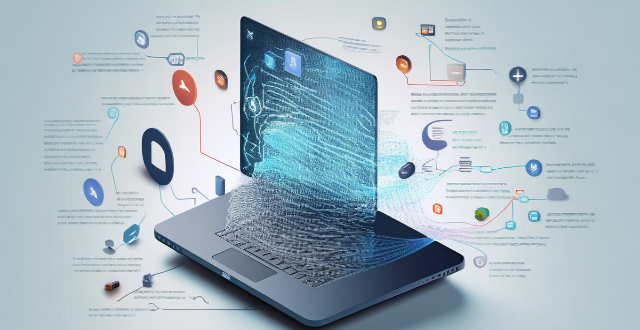
What is the latest advancement in mobile communication technology ?
The latest advancement in mobile communication technology is the **5G network**, promising faster speeds, lower latency, and more reliable connections. Key features include increased speed, reduced latency, improved reliability, enhanced coverage, and network slicing. Benefits of 5G technology include faster download and upload speeds, better video call quality, improved IoT connectivity, enhanced gaming experience, and autonomous vehicles.

How does satellite communication compare to other forms of communication ?
Satellite communication offers global coverage, high capacitySatellite communication offers global coverage, high capacity higher latency and initial costs and reliability but has higher latency and initial costs compared to terrestrial and wireless communication. Terrestrial communication provides lower latency and moderate reliability at a lower cost, while wireless communication offers convenience and portability at a variable cost. Satellite communication is suitable for remote areas and sensitive applications due to its security features.

How can I safely transport large or fragile second-hand items ?
The article provides a detailed guide on how to safely transport large or fragile second-hand items. It starts by listing the necessary packing materials and then moves on to assessing the item for pre-existing damage. The article emphasizes the importance of disassembling larger items, proper packing techniques for both fragile and large items, and loading the vehicle carefully. It also includes tips for safe driving during transit and careful unloading. The article concludes with a recommendation to consult professional movers when unsure about handling such items.
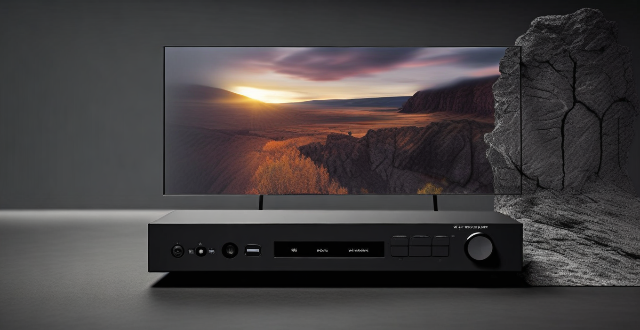
What are the effects of network latency on video conferencing ?
Network latency can have significant impacts on video conferencing, including audio and video delays, reduced quality of service, increased frustration and disruptions, and missed opportunities for collaboration. To minimize these effects, it is important to ensure stable and reliable internet connections and use high-quality software and hardware.

Is it safe to carry large amounts of cash when traveling ?
When it comes to traveling, there are a variety of considerations that must be taken into account. One such consideration is whether or not it is safe to carry large amounts of cash while on the go. In this article, we will explore the potential risks and benefits associated with carrying large sums of money when traveling. One of the most significant risks associated with carrying large amounts of cash is the possibility of theft or robbery. This risk can be particularly high in areas where crime rates are high or in countries where pickpocketing and other forms of theft are common. Another risk associated with carrying large amounts of cash is the possibility of loss or disaster. For example, if your wallet or purse is lost or stolen, you may lose all of the cash that you were carrying with you. Similarly, if you are involved in an accident or natural disaster, your cash could be damaged or destroyed. Carrying large amounts of cash can also be risky due to fluctuating currency exchange rates. If you are traveling to a country with a different currency than your own, you may find that the value of your cash decreases over time as exchange rates change. Despite these risks, there are also some potential benefits to carrying large amounts of cash when traveling. These include convenience, no fees or charges, and accessibility in situations where other forms of payment may not be readily available. However, there are also several alternatives that travelers can consider, such as credit cards, debit cards, prepaid cards, and mobile payment apps like Apple Pay and Google Wallet. In conclusion, carrying large amounts of cash when traveling can be both risky and beneficial depending on various factors. While it may offer convenience and accessibility in certain situations, it also poses significant risks such as theft, loss, and fluctuating currency exchange rates. As such, travelers should carefully consider their options and weigh the potential benefits against the potential risks before deciding whether or not to carry large amounts of cash while on the go.

How much would it cost to implement geoengineering on a large scale ?
The text discusses the financial implications of implementing large-scale geoengineering projects to counteract global warming. Key points include research and development costs, initial implementation expenses, ongoing operational costs, uncertainty and risk management expenses, and legal and regulatory compliance costs. The analysis suggests that large-scale geoengineering would require significant funding and resources.

What is 5G network and how does it work ?
The 5G network is the fifth generation of mobile networks, offering significant improvements in speed, capacity, and responsiveness over its predecessor, 4G. It utilizes higher frequencies, advanced antenna technology, and reduced latency to provide enhanced mobile broadband, lower latency, increased reliability, massive IoT connectivity, and improved energy efficiency. The rollout of 5G worldwide is expected to enable new applications and services that were not possible with previous network technologies.
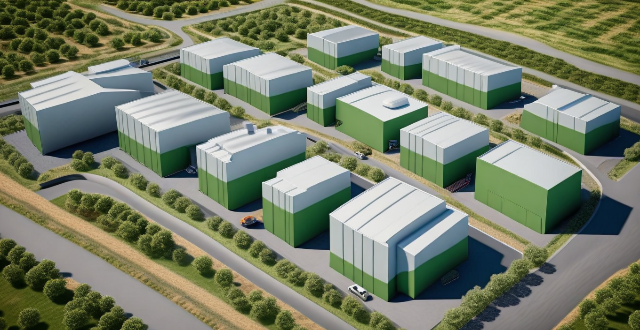
What are the challenges associated with implementing carbon capture on a large scale ?
Carbon capture and storage (CCS) is a technology that aims to reduce greenhouse gas emissions by capturing carbon dioxide (CO2) from industrial processes and storing it underground. Implementing CCS on a large scale poses several challenges, including high costs, technology maturity, storage capacity, regulatory and legal barriers, public perception, and energy requirements. Overcoming these challenges is essential for the successful implementation of CCS on a large scale. Collaboration among governments, industry, and researchers will be necessary to develop more efficient and cost-effective carbon capture technologies, establish clear regulations and liability frameworks, and raise public awareness about the benefits of CCS.

What is the significance of server location in optimizing network performance ?
Server location is crucial for optimizing network performance, as it affects latency, network reliability, and data transfer times. By locating servers closer to users, organizations can reduce the distance that data has to travel, resulting in fewer hops and less time spent in transit. This leads to reduced latency, faster load times for websites and applications, and improved video conferencing or gaming experiences. Additionally, having servers located near users can help reduce network congestion and improve overall network reliability. Therefore, organizations should consider server location when designing their networks and choosing hosting providers.

Is it better to use a wired or wireless connection for gaming consoles ?
When it comes to gaming consoles, the choice between a wired and wireless connection can significantly impact your gaming experience. Wired connections typically offer faster speeds, lower latency, and more stable connections but limit mobility and can create a cluttered setup. Wireless connections allow for increased mobility and a cleaner setup but may have slower speeds, higher latency, and potential interference from other devices. The choice between a wired and wireless connection depends on your specific needs and preferences, such as the type of games you play and the layout of your home.

How does Wi-Fi 6 perform in high interference environments ?
Wi-Fi 6, the latest wireless networking standard, offers several advantages over its predecessors in high interference environments. Key features include improved spectral efficiency, target wake time, BSS coloring, and spatial reuse. These features result in lower latency, increased throughput, better energy efficiency, and scalability. Wi-Fi 6 is well-suited for handling a large number of connected devices while maintaining low latency and high throughput, making it an ideal choice for high-density network environments like stadiums, airports, and apartment buildings.

How fast is fiber optic broadband compared to other types of internet connections ?
Fiber optic broadband is the fastest internet connection type, offering significantly faster speeds and more reliable performance compared to DSL, cable, and satellite connections. Fiber optic broadband has very low latency, making it ideal for real-time applications like online gaming and video conferencing. It is also less susceptible to interference and signal degradation, resulting in more stable and consistent performance. Overall, fiber optic broadband is well-positioned to handle increasing bandwidth requirements due to its scalability and capacity for faster speeds.

What is 5G technology and how does it differ from 4G ?
5G technology, the fifth generation of wireless networks, is set to revolutionize mobile networking by offering faster speeds, lower latency, and increased capacity compared to 4G. Key differences between 5G and 4G include improvements in speed (up to 20 Gbps for 5G vs. 10-30 Mbps for 4G), latency (as low as 1 millisecond for 5G vs. 50 milliseconds for 4G), and network capacity (supporting up to a million devices per square kilometer for 5G). 5G also utilizes advanced network architecture and a wider bandwidth, incorporating both sub-6 GHz and millimeter-wave spectrum. The advantages of 5G over 4G include enhanced mobile broadband, ultra-reliable low latency communications, and massive machine type communications, making it suitable for applications like remote surgery, autonomous vehicles, and smart cities. The potential impact of 5G spans various sectors such as industrial automation, healthcare, transportation, entertainment, and smart city development, promising to connect people and machines in unprecedented ways and open doors to numerous opportunities and advancements.

Is network expansion necessary for large enterprises ?
In today's digital age, large enterprises rely heavily on their network infrastructure to support their operations. As businesses grow and expand, it becomes increasingly important to ensure that their networks can handle the increased demand. This raises the question: is network expansion necessary for large enterprises? One of the main benefits of network expansion is scalability. As a business grows, its network needs to be able to accommodate the additional users and devices. By expanding the network, businesses can ensure that they have enough bandwidth and resources to support their growing workforce. Network expansion can also improve overall performance. When a network is congested with too many users and devices, it can lead to slower speeds and reduced productivity. By expanding the network, businesses can reduce congestion and improve performance across the board. As businesses grow, they become more attractive targets for cyber attacks. By expanding their network, businesses can implement additional security measures such as firewalls, intrusion detection systems, and access control lists to protect against potential threats. While there are many benefits to network expansion, there are also some challenges that businesses must consider. Expanding a network can be expensive, especially for large enterprises with complex IT infrastructures. Businesses must carefully consider the costs associated with expanding their network, including hardware, software, and maintenance expenses. As networks become larger and more complex, managing them becomes increasingly difficult. Businesses must ensure that they have the necessary expertise and resources to manage their expanded network effectively. When expanding a network, businesses must ensure that all components are compatible with each other. This includes hardware, software, and protocols. Incompatible components can lead to downtime and reduced productivity. To successfully expand a network while minimizing challenges, businesses should follow these best practices: plan ahead, choose the right technology, train personnel, implement security measures, and monitor performance. In conclusion, network expansion is necessary for large enterprises to support their growing operations and maintain high levels of performance and security. However, businesses must carefully consider the challenges associated with expanding their network and follow best practices to minimize these challenges and ensure a successful outcome.

What are the benefits of using a 5G network ?
The advent of the 5G network has brought about significant changes in the way we use technology. It offers several benefits that were not possible with earlier networks. Here are some of the key advantages: 1. **Faster Speeds**: Compared to 4G, 5G can provide download and upload speeds that are up to 10 times faster. 2. **Lower Latency**: With 5G, the delay is reduced significantly, making real-time communication more efficient. 3. **Increased Capacity**: 5G networks can handle more devices and connections at the same time. 4. **Improved Reliability**: They use advanced signal processing techniques to ensure stable connections. 5. **New Use Cases**: 5G opens up opportunities for new applications like virtual reality and smart cities.
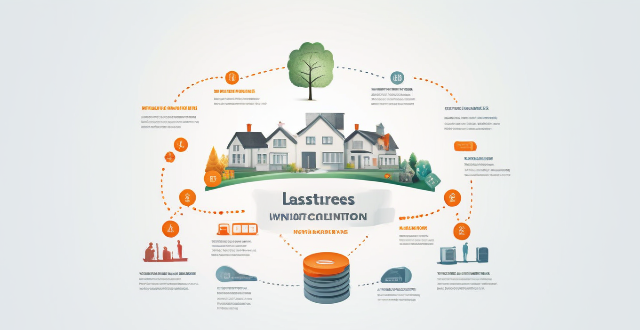
What are the latest wireless communication standards ?
This article discusses the latest wireless communication standards, including 5G, Wi-Fi 6, Bluetooth 5.2, and LoRaWAN. It highlights their key features, such as enhanced mobile broadband for 5G, OFDMA and MU-MIMO for Wi-Fi 6, LE Audio and direction finding for Bluetooth 5.2, and long range and low power consumption for LoRaWAN. The article also mentions potential use cases for each standard, such as smart cities and autonomous vehicles for 5G, home networks and public Wi-Fi hotspots for Wi-Fi 6, personal audio devices and wearable technology for Bluetooth 5.2, and smart agriculture and environmental monitoring for LoRaWAN.

Will upgrading my broadband improve my online gaming experience ?
Upgrading broadband can enhance online gaming by reducing latency and increasing speeds, stability, and bandwidth, leading to smoother gameplay and fewer disruptions. However, it is important to consider costs, hardware compatibility, provider options, and potential trial periods before deciding on an upgrade.